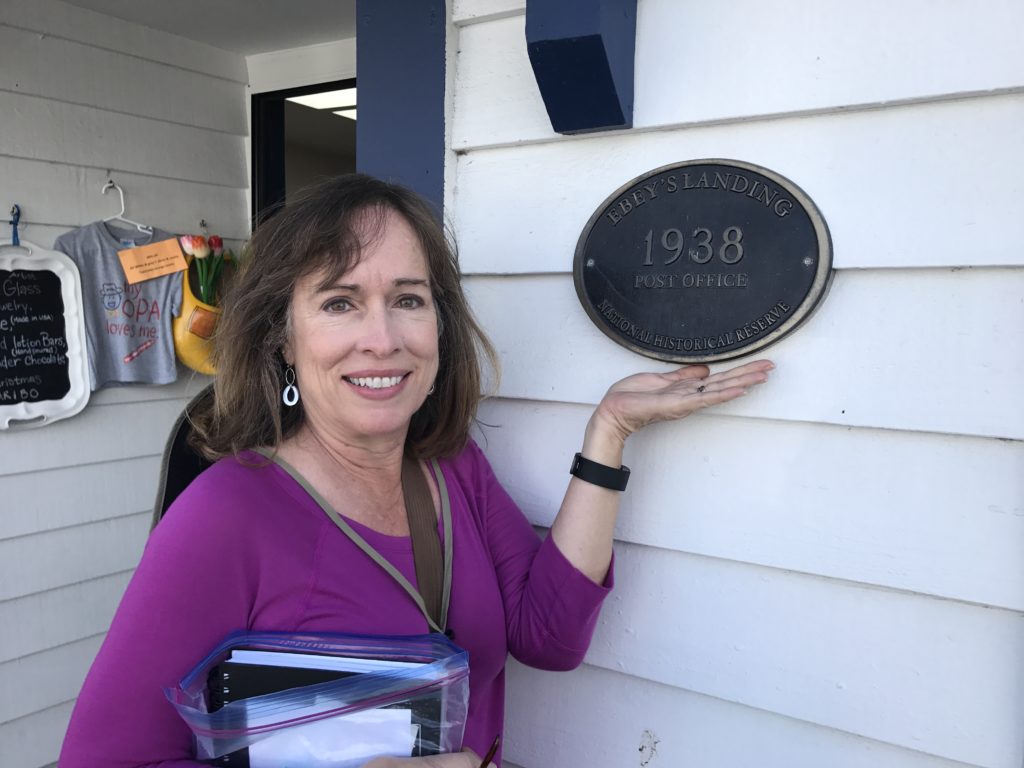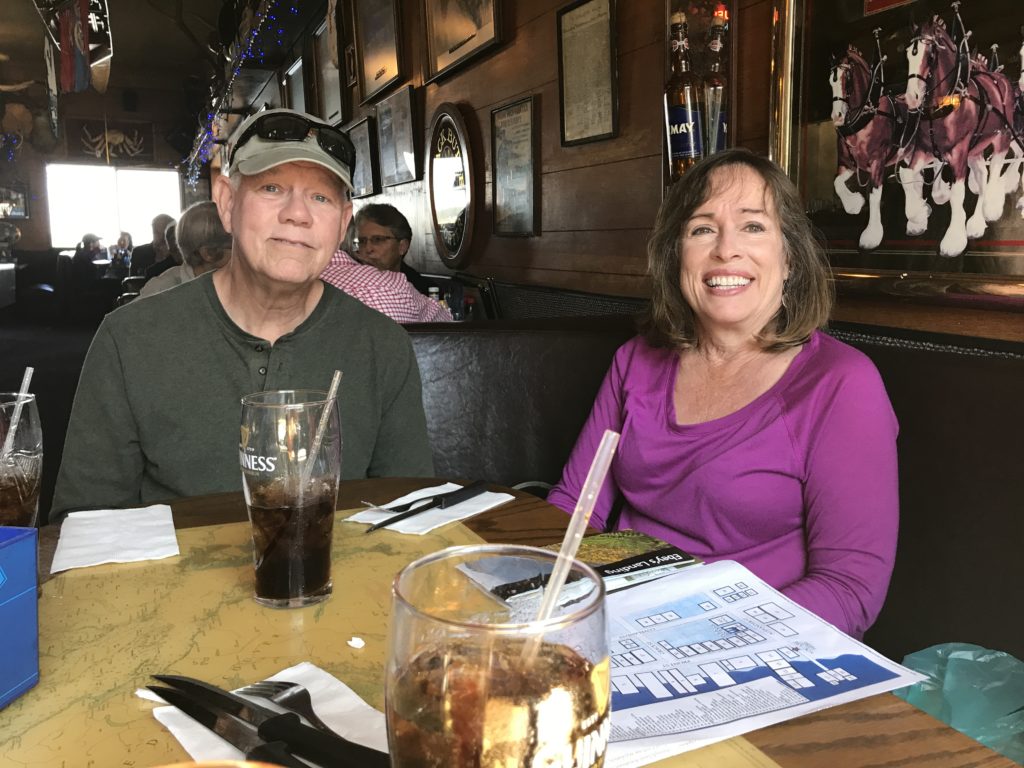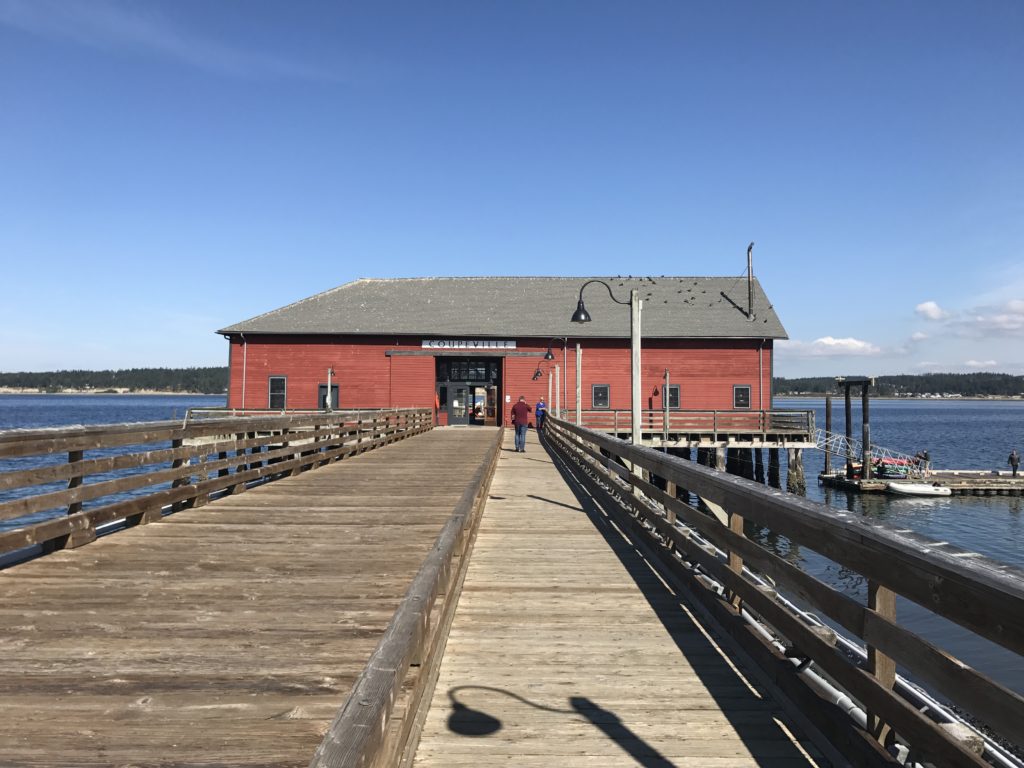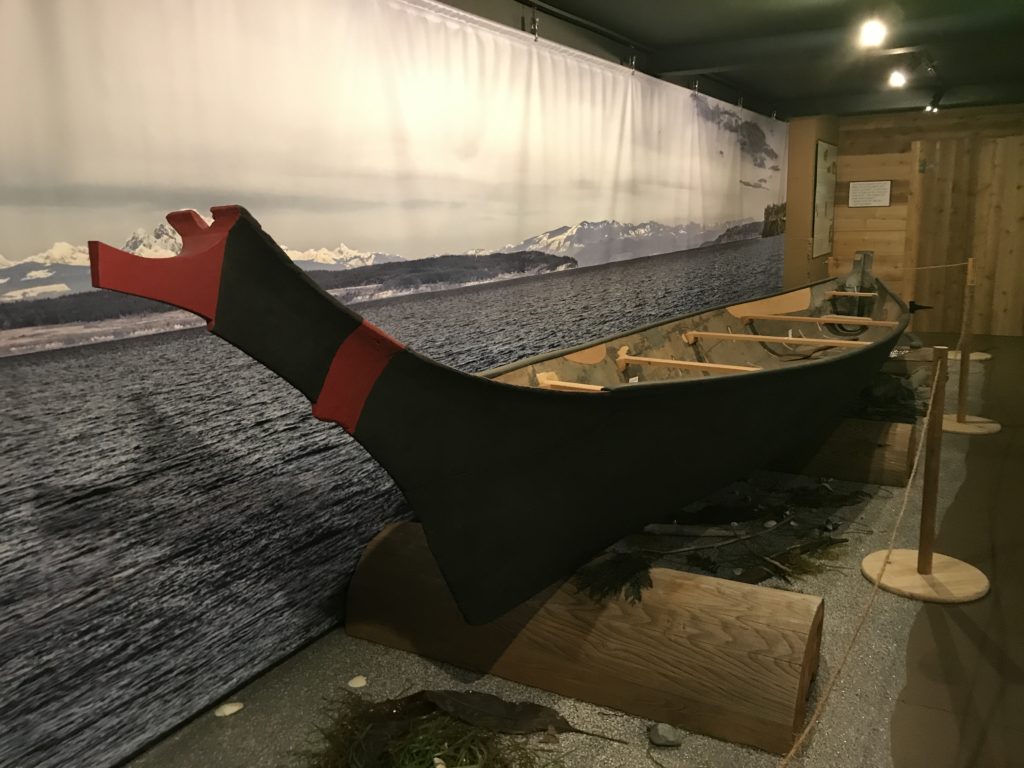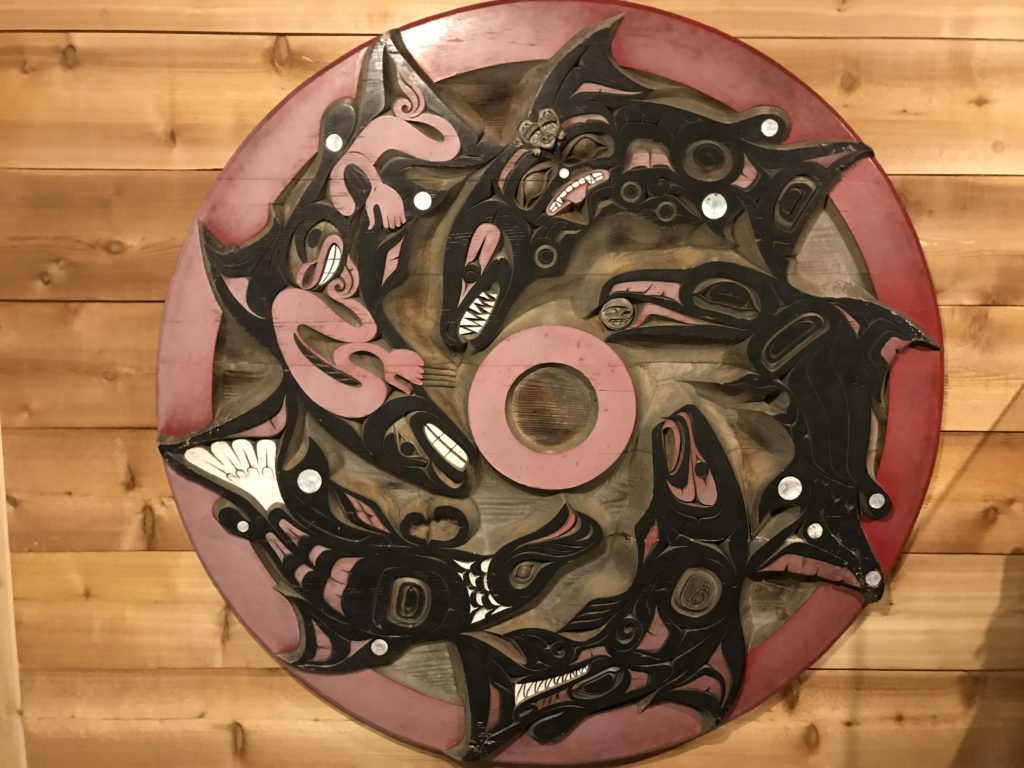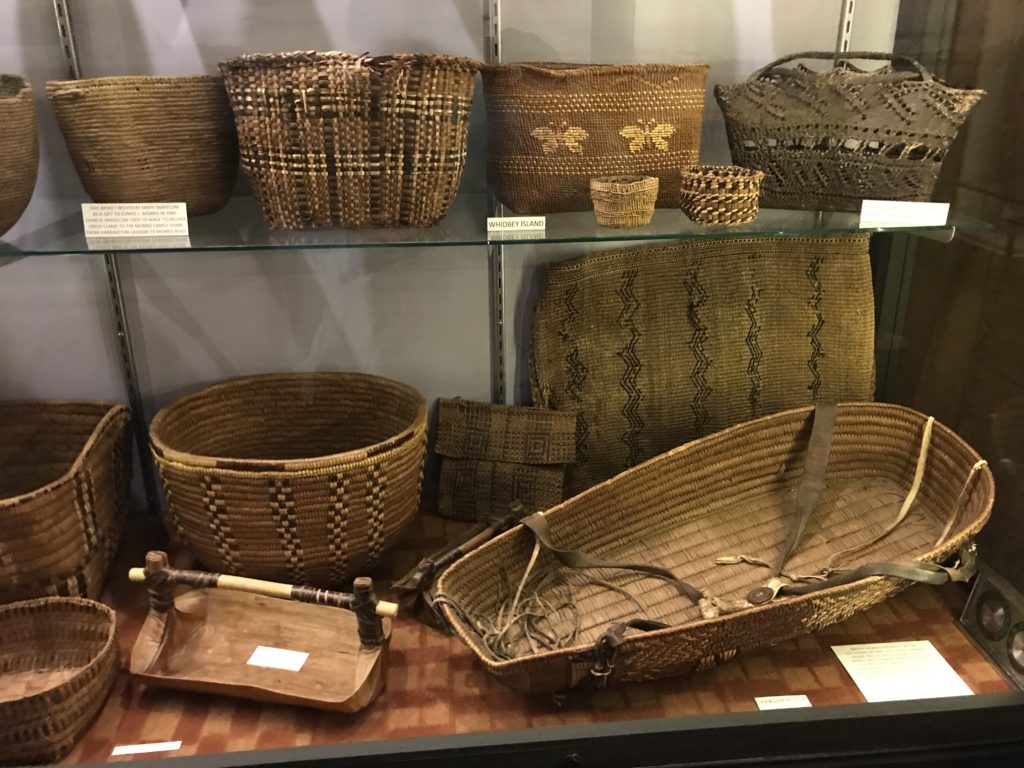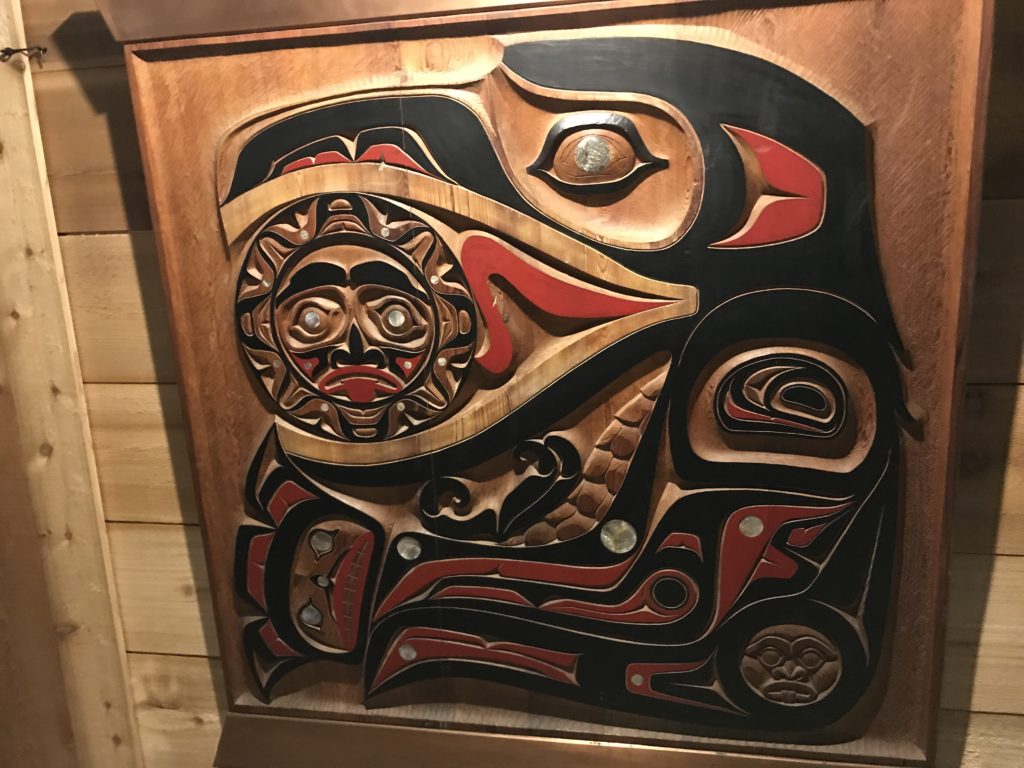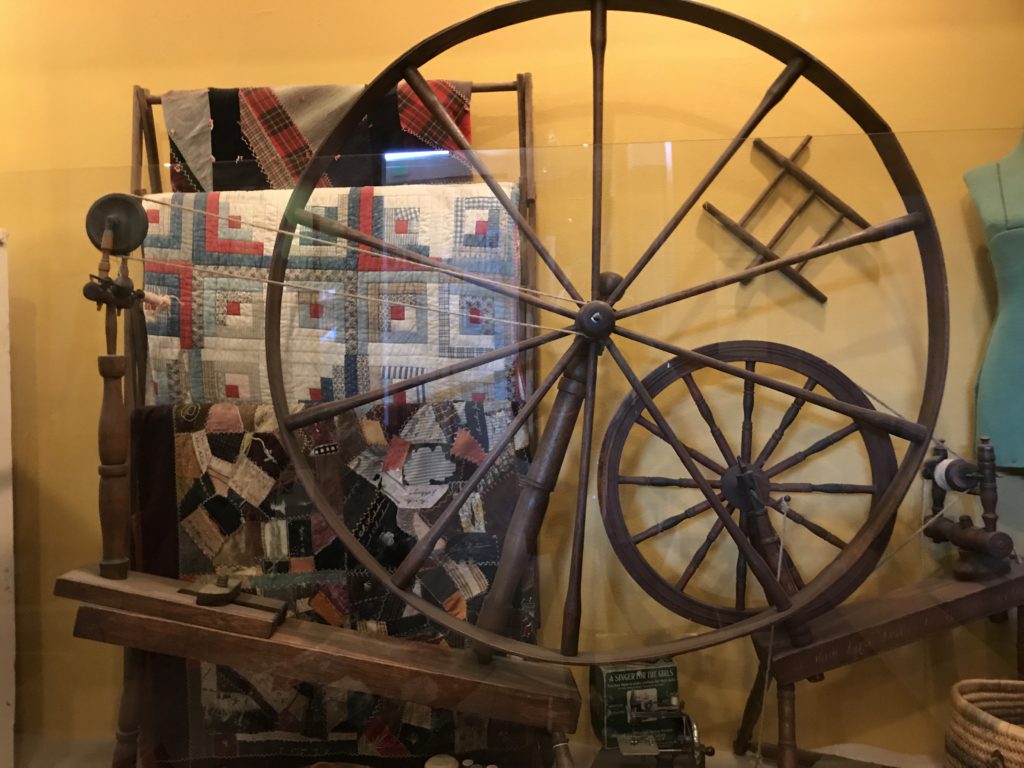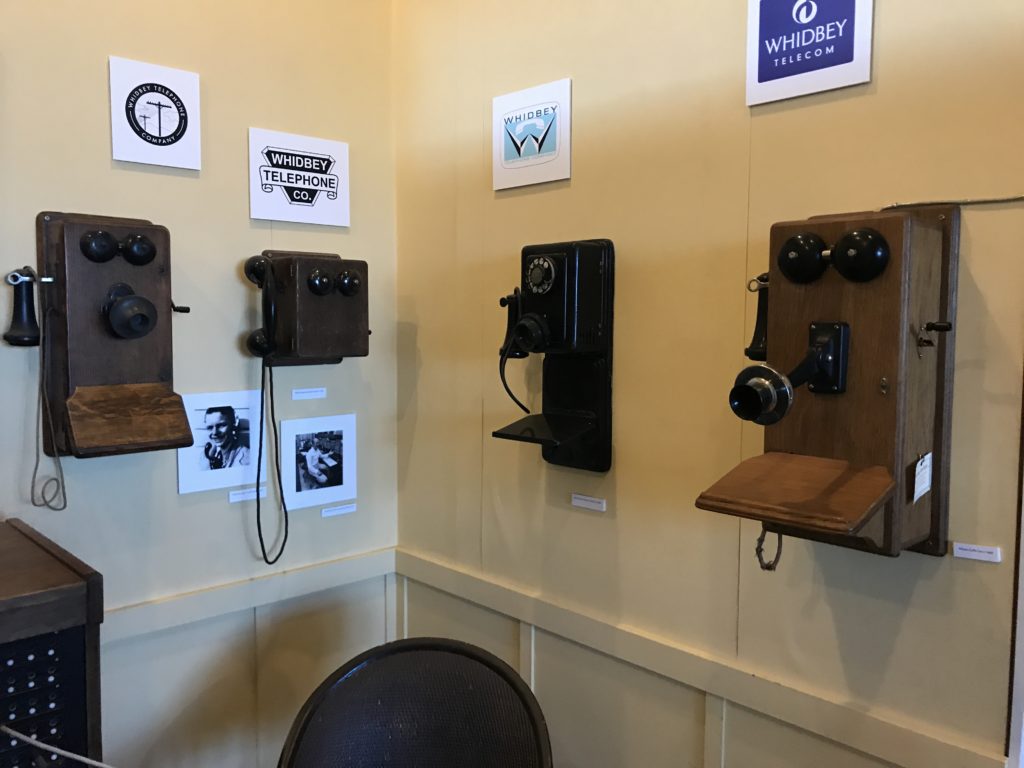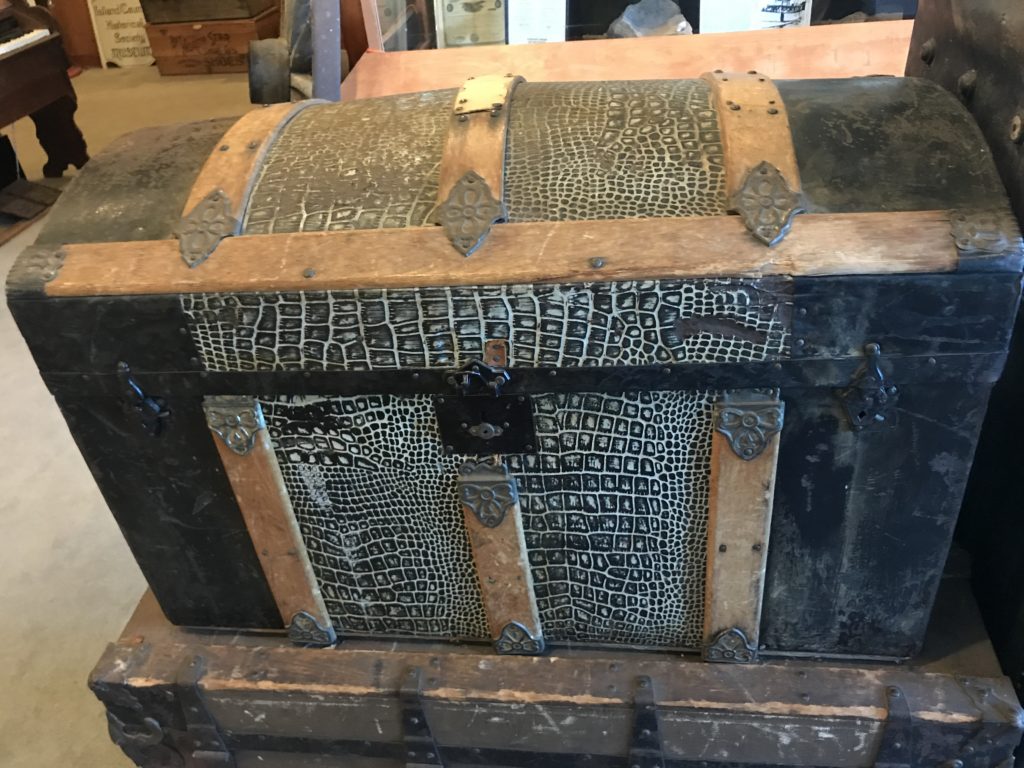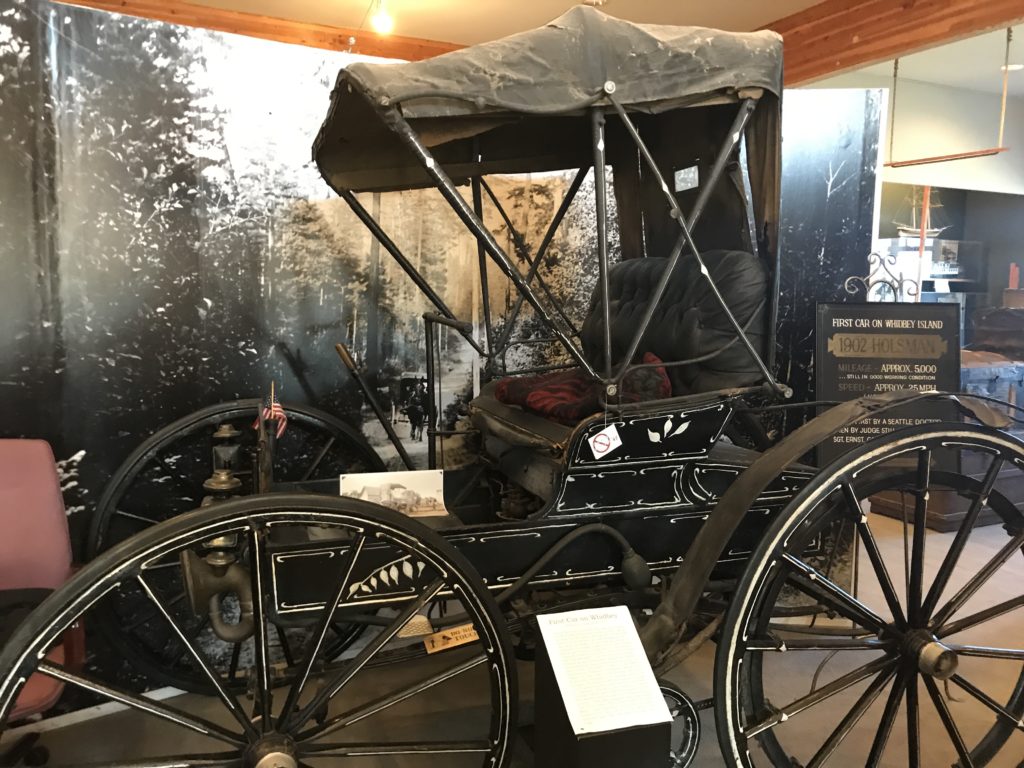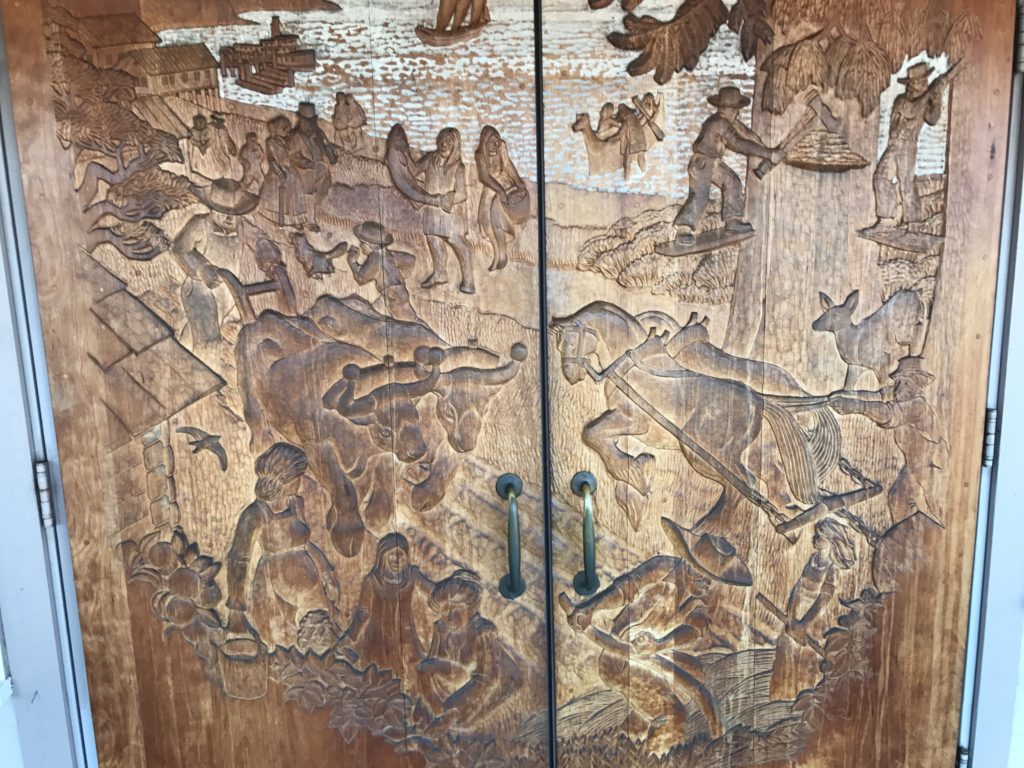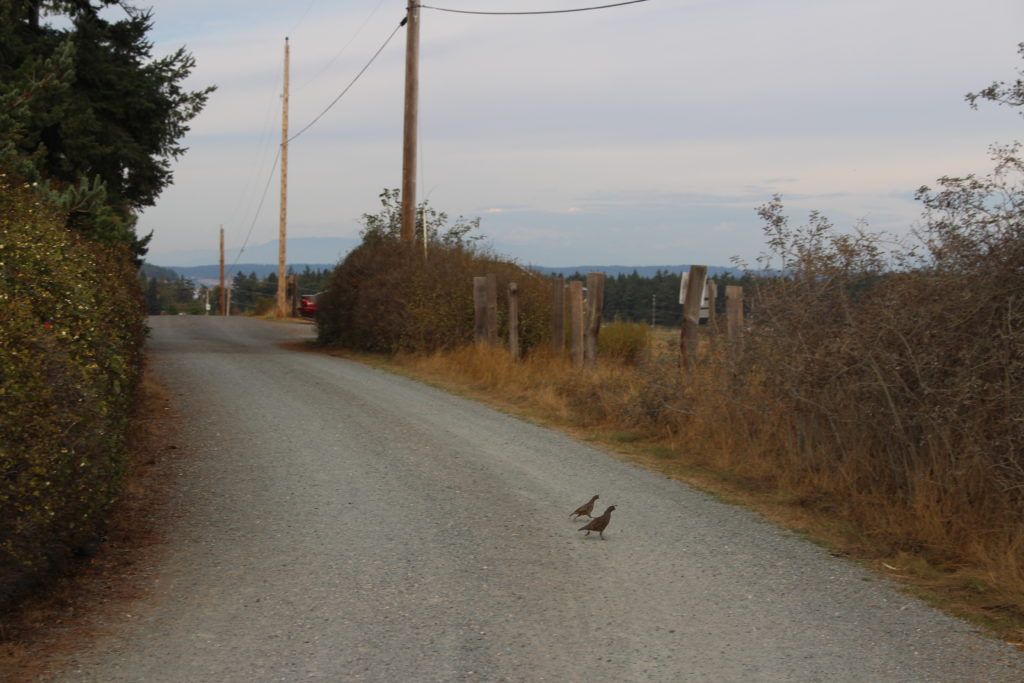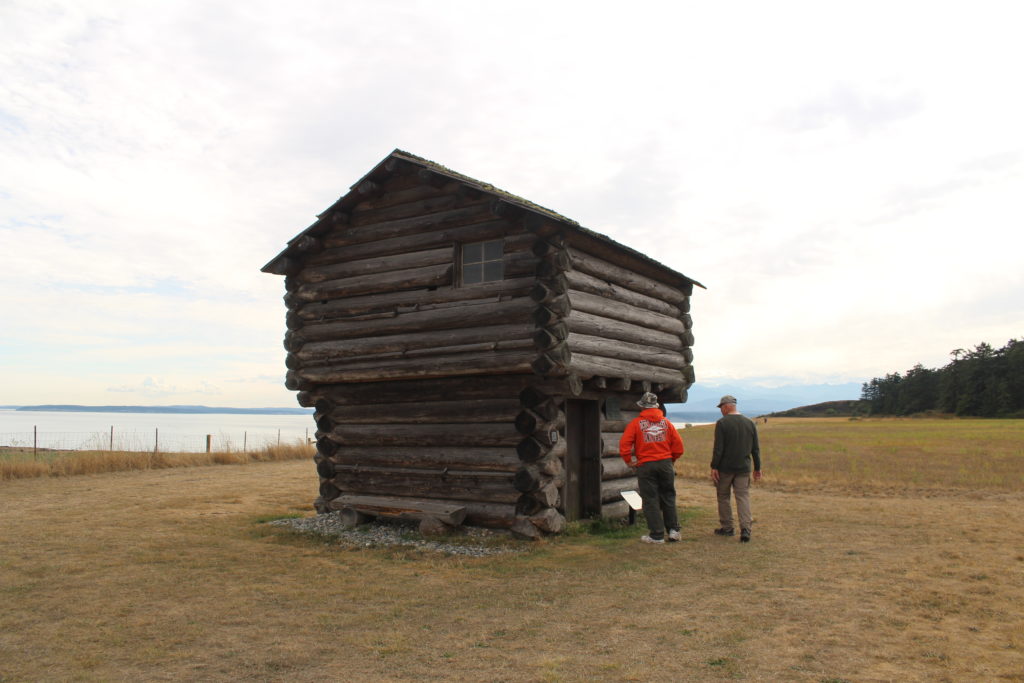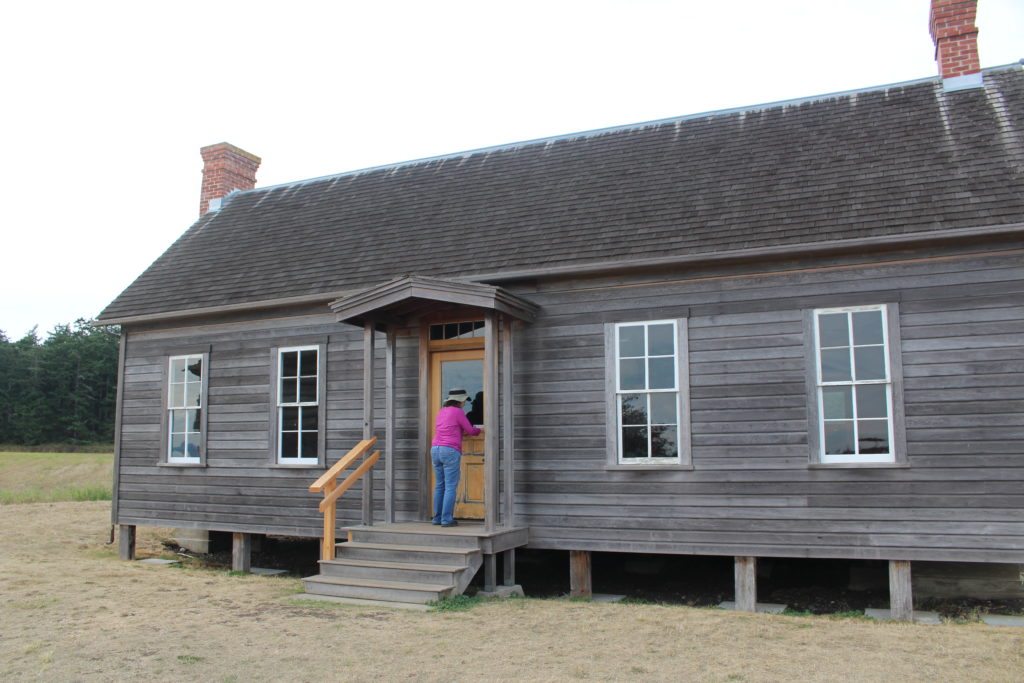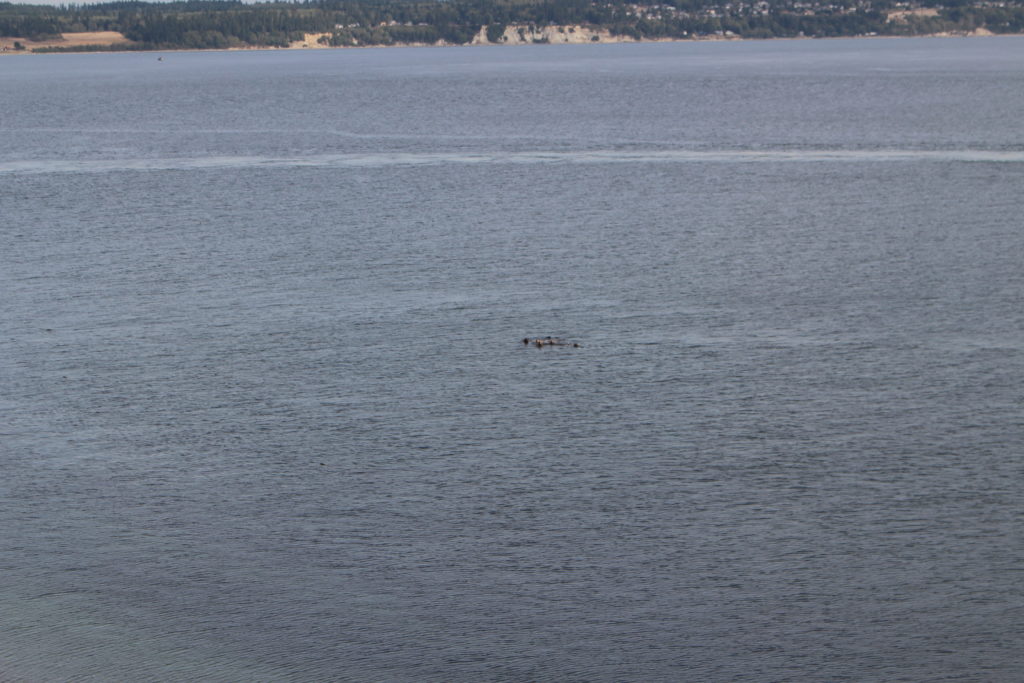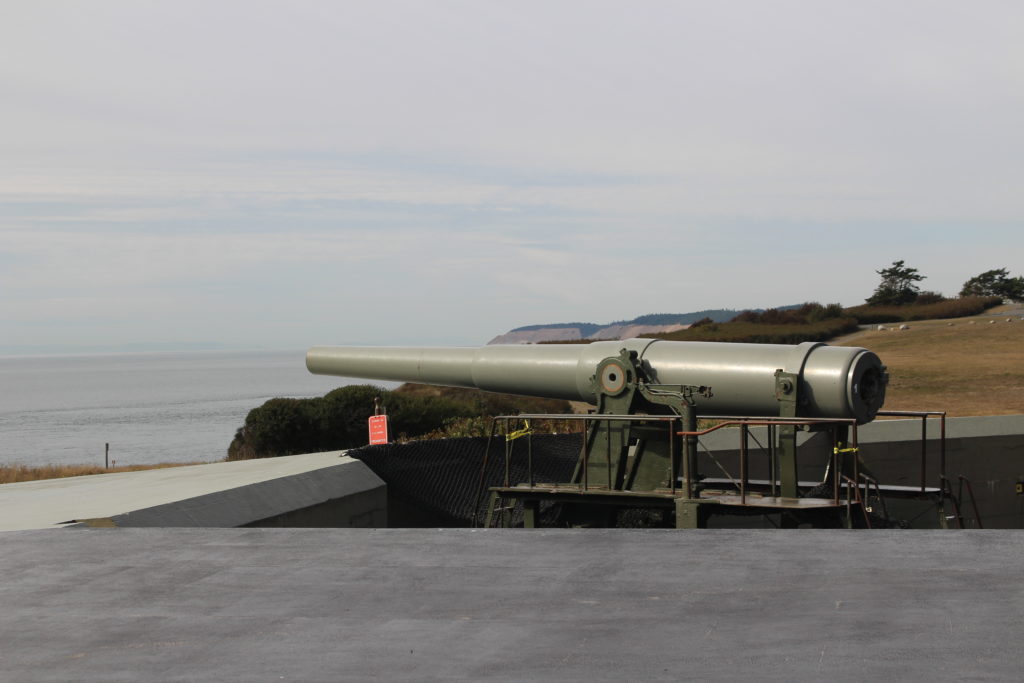After all the hiking up and down mountains in the North Cascades, we needed a day with less vertical challenge. So we stayed on Whidbey Island (our current home) and toured Ebeys Landing National Historical Reserve.
Ebeys Landing was the first National Historical Reserve in the National Park Service. A national reserve is an area designated to preseve, protect, and interpret historical features. Ebeys Landing highlights one of the earliest European settlements on Puget Sound. The Reserve is a cooperative effort between the National Park Service, Washington State Parks, local landowners, and the village of Coupeville.
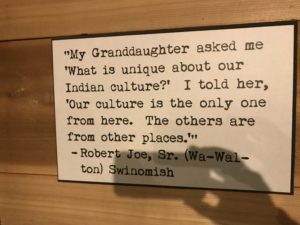 We started in Coupeville, where I stamped my book at the Chamber of Commerce. Then we headed across the street to the Island County Historical Museum. The first floor was filled with information about the settlers in the area. But I found the basement level much more interesting because it highlighted the heritage of the native people. One quote in particular stuck with me and you can see it in the picture on the right.
We started in Coupeville, where I stamped my book at the Chamber of Commerce. Then we headed across the street to the Island County Historical Museum. The first floor was filled with information about the settlers in the area. But I found the basement level much more interesting because it highlighted the heritage of the native people. One quote in particular stuck with me and you can see it in the picture on the right.
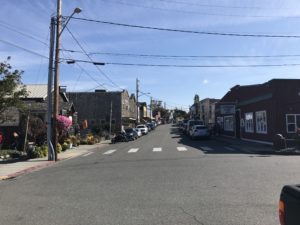 We walked down the historical main street of Coupeville and browsed in some of the shops. A lovely yarn shop caught my eye. Although I resisted buying anything, Val could not. Tom checked out an antique store. We had lunch at a pub and ice cream at Kapaws – unrelated to anything pet-like. One of the ice cream flavors was “Elk Tracks.” When I asked what it was, the owner told me it had the same ingredients as moose tracks, but there aren’t any moose in Washington!
We walked down the historical main street of Coupeville and browsed in some of the shops. A lovely yarn shop caught my eye. Although I resisted buying anything, Val could not. Tom checked out an antique store. We had lunch at a pub and ice cream at Kapaws – unrelated to anything pet-like. One of the ice cream flavors was “Elk Tracks.” When I asked what it was, the owner told me it had the same ingredients as moose tracks, but there aren’t any moose in Washington!
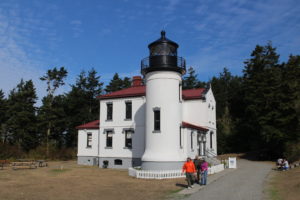 After lunch we went to Fort Casey State Park, another part of Ebeys Landing National Historical Reserve. Fort Casey highlights the military presence on the island from the 1850’s through World War II. Admiralty Head Lighthouse was the highlight of the park. Another highlight: we saw eight sea lions playing in the ocean! We examined the gun emplacements which once guarded the entrance to Puget Sound and its shipyards.
After lunch we went to Fort Casey State Park, another part of Ebeys Landing National Historical Reserve. Fort Casey highlights the military presence on the island from the 1850’s through World War II. Admiralty Head Lighthouse was the highlight of the park. Another highlight: we saw eight sea lions playing in the ocean! We examined the gun emplacements which once guarded the entrance to Puget Sound and its shipyards.
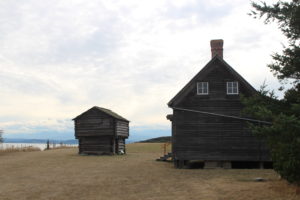 We finished our visit to Ebeys Landing by going to the actual Ebey cabin and blockhouse. Isaac Neff Ebey settled on Whidbey Island in 1851, ignoring the Skagit natives who already lived on the land. He built a blockhouse for protection, although he never used it. He also built a small cabin for himself and his family and started farming. The National Reserve is named after the ferry he ran. Isaac Ebey was killed in 1857 by the natives after Ebey killed one of the tribal members who protested Ebey taking his land.
We finished our visit to Ebeys Landing by going to the actual Ebey cabin and blockhouse. Isaac Neff Ebey settled on Whidbey Island in 1851, ignoring the Skagit natives who already lived on the land. He built a blockhouse for protection, although he never used it. He also built a small cabin for himself and his family and started farming. The National Reserve is named after the ferry he ran. Isaac Ebey was killed in 1857 by the natives after Ebey killed one of the tribal members who protested Ebey taking his land.
Our visit to Ebeys Landing enforced what we already knew about European settlement in the area. Because the islands of Puget Sound had few natives, the American and European settlers felt the land was theirs for the taking. Without the necessity of buying the land. But the coastal tribes are getting their revenge now by building and running casinos which part eager participants from their money.

